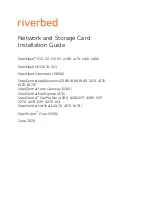
600-2708 PCI Express Expansion System User’s Manual
2-1
Revision 1.0, June 2010
CHAPTER 2
THEORY OF OPERATION
2.1
THEORY OF OPERATION
The basic PCI Express link consists of dual unidirectional differential links, implemented as a transmit
pair and a receive pair. The signaling rate for PCI Express Gen1 is 2.5 Gigabits/second/Lane/direction
and Gen2 is 5.0 Gigabits/second/Lane/direction. A link supports at least one lane.
The PCIe-425 is installed in a x8, Gen1 or Gen2 host slot. The PCI Express link from the PCIe-425 over
the cable to the PCIe-451 is an eight lane (x8) Gen2 link. The PCIe-451 provides eight x1 slots so
bandwidth is matched back to the host slot. All PCIe-451 slots are populated mechanically with x4
connectors; the upper three lanes of the slots are not connected. Although not expressly permitted by the
PCI Express Specification, the slots will accommodate “down-shifting” a x4 card into a x1 slot.
Plugging a smaller link card into a larger link connector is fully allowed.
Once the PCIe-425 is installed into the host PC, the cable connected to the PCIe-451, the chassis
plugged into an AC power outlet and any desired add-in cards are installed, the system is ready to be
turned on. When the host is turned on, a signal from the PCIe-425 will turn on the PCIe-451 chassis. A
number of things happen at this point. First, the PCI Express links are initialized. This is a purely
hardware initialization where each PCI Express link is set up following a negotiation of lane widths by
the two ends of each link. No firmware or operating system software is involved. Once the links are
initialized or “trained”, there are LED indicators on each of the Cyclone Microsystems cards that
indicate the links are trained. A detailed explanation of the LEDs follows later in this manual.
One essential requirement for system initialization is the ability of the host system’s BIOS to be able to
enumerate the many bridges inherent in a complex PCI Express design. The links from the PCIe-425 to
the PCIe-451 are created with PCI Express Switches. Each link looks like a PCI-to-PCI bridge to the
Host’s BIOS. The number of bridges can add up quickly. Older BIOS may not have the resources to
enumerate the number of bridges. Make sure that the BIOS on the host computer has the latest updated
BIOS. If required, contact the host system’s manufacturer to make sure that the BIOS used can handle
the large number of bridges that it will see in the system.

































